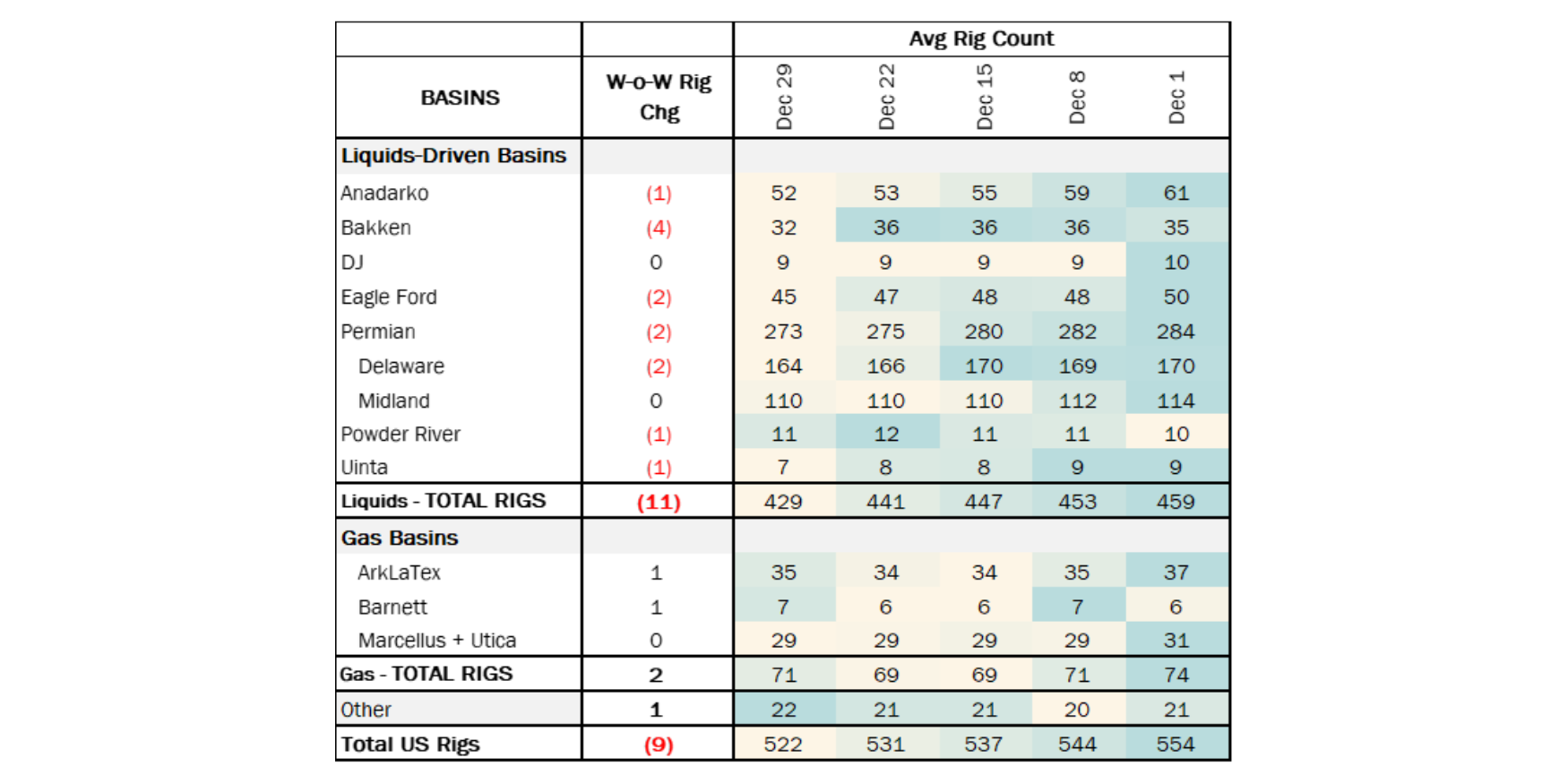Executive Summary: Rigs: The total rig count decreased by 9 for the December 29 week, down to 522 from 531. Infrastructure: The Trans Mountain Pipeline Expansion (TMX) came online in May 2024, delivering more Western Canadian Sedimentary Basin (WCSB) production to Westridge Marine Terminal’s export docks in British Columbia. Storage: East Daley expects a 150 Mbbl injection into commercial and Strategic Petroleum Reserve (SPR) inventories for the week ending January 10.
Rigs:
The total rig count decreased by 9 for the December 29 week, down to 522 from 531. Liquids-driven basins declined by 11 rigs W-o-W.
- Bakken (-4): Continental Resources, Hess Corporation, Kraken Resources, Petro-Hunt
- Permian – Delaware (-2): Devon Energy, Riley Exploration Permian
- Eagle Ford (-2): Pursuit Oil & Gas, Formentera Partners
- Anadarko (-1): Downing-Nelson Oil
- Powder River (-1): Peak Powder River Resources LLC
- Uinta (-1): Crescent Energy Company
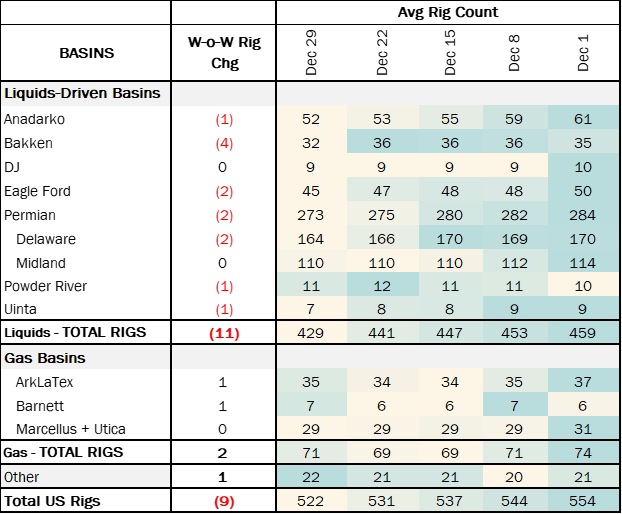
Infrastructure:
The Trans Mountain Pipeline Expansion (TMX) came online in May 2024, delivering more Western Canadian Sedimentary Basin (WCSB) production to Westridge Marine Terminal’s export docks in British Columbia. Trans Mountain is Canada’s only outlet to international markets outside the US, and the twin line adds 13% (590 Mb/d) of pipeline egress for WCSB producers.
Prior to TMX coming online, there was much speculation regarding potential disruptions to US crude oil markets and US refinery supply. East Daley forecasted little impact to supply for PADD II refiners, but we believed the pain would be felt in the cost to retain the barrel. Prices for Canadian crude oil have strengthened, though the impact was mitigated by several factors.
First, Trans Mountain was late to finish construction, pushing TMX startup to 2Q24 rather than the 1Q24 target. The one-quarter delay meant TMX began moving crude when PADD II refinery demand was down, while WCSB production was significantly up. WCSB oil production took off in 4Q23 in anticipation of TMX coming online, growing 8% (370 Mb/d) over 3Q23 and pushing to record output of 4.8 MMb/d in December ‘24.
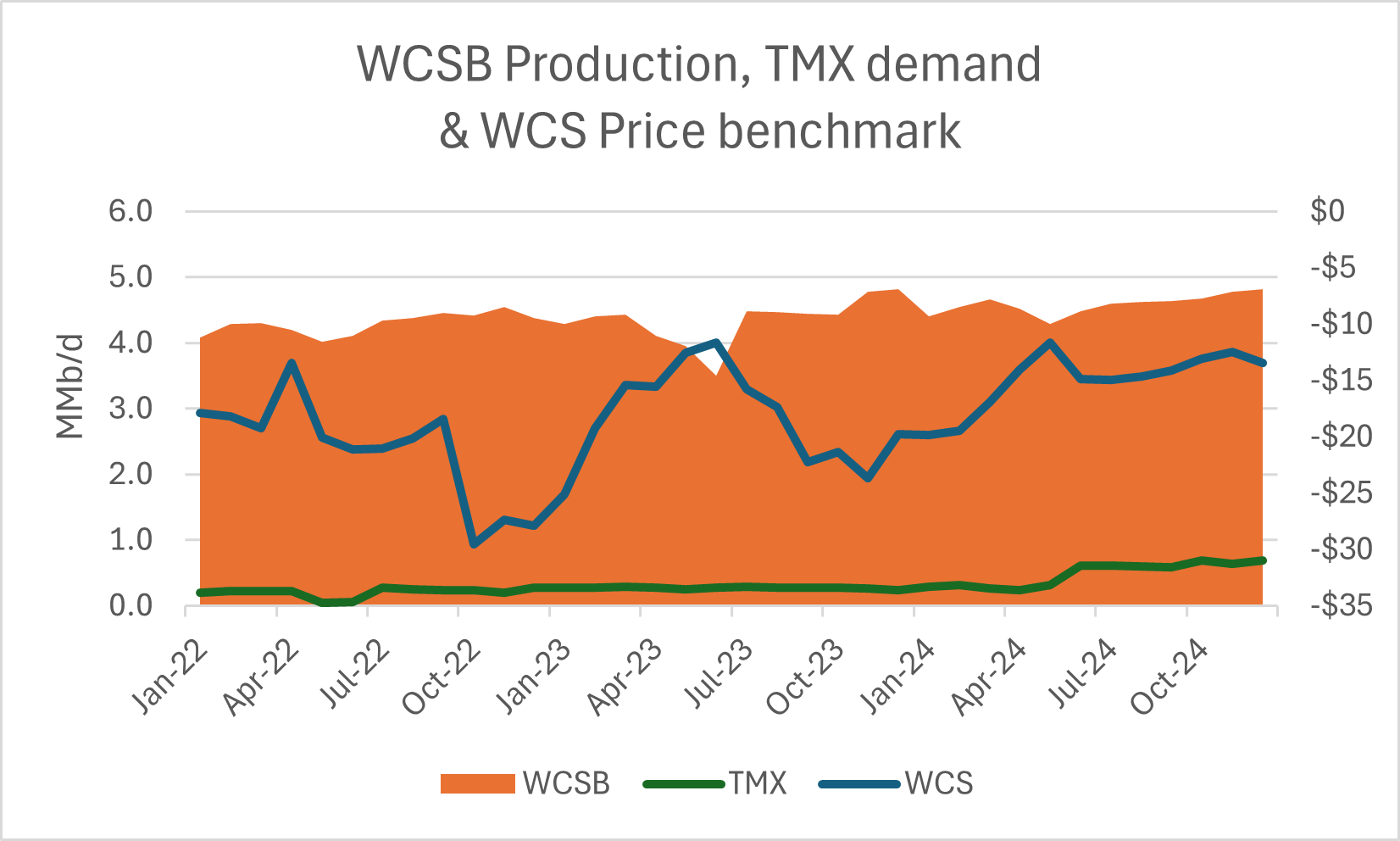
By the time TMX came online, over 400 Mb/d of crude had moved into storage and production was 15% above 2023 volumes, resulting in refinery supply never feeling the full impact of 590 Mb/d being diverted to other markets. Canadian-reported TMX data show 3Q24 volumes meeting minimum volume commitments of ~470 Mb/d but still shy of the full 590 Mb/d capacity.
PADD II refiners saw only a modest TMX price impact due to growing WCSB production. WCS Hardisty prices rose when TMX first came online, narrowing the spread to Nymex to -$11.50/bbl in May ’24, but the gains were short-lived due to increased production and reduced demand. The spread bounced back to -$13.50, though was still significantly improved vs 2023’s average price discount of -$19.10.
Overall, TMX’s biggest contribution has been to stabilize the WCS benchmark. Since TMX came online, the spread to WTI has moved within a $6/bbl range, as opposed to average historical spreads of -$13 or more and reaching discounts of ~-$29.00 to WTI.
Looking forward, East Daley does not believe the WCS Hardisty discount to WTI will narrow under $10.00, but nor will prices have the extreme downside volatility. Overall, TMX has provided Western Canada with much greater price stability, increasing prices by ~$5 from avg ’23 to avg ’24 differentials.
Storage
East Daley expects a 150 Mbbl injection into commercial and Strategic Petroleum Reserve (SPR) inventories for the week ending January 10. We expect total US stocks, including the SPR, will close at 810 MMbbl.
The US natural gas pipeline sample, a proxy for change in oil production, decreased 1.21% W-o-W across all liquids-focused basins. Samples decreased 5.72% in the Eagle Ford Basin, 3.28% in the Permian Basin and 1.45% in the Bakken. Samples increased 3.33% in the Gulf of Mexico and 1.19% in the Rockies. The Rockies and the Gulf of Mexico have a high correlation between gas volumes and crude oil volumes, whereas the Permian and Eagle Ford basins correlation is less than 45%.
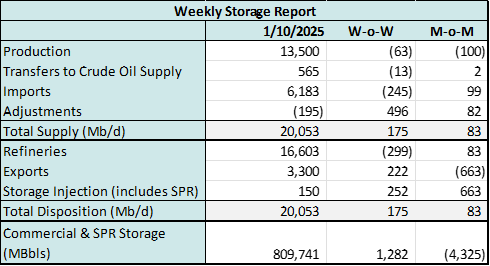
We expect US crude production to be 13.5 MMb/d. According to US bill of lading data, US crude imports decreased by 245 Mb/d W-o-W to 6.2 MMb/d. More than 60% of the supply originated from Canadian pipelines and vessels into the US, with the remainder largely coming from vessels carrying crude from Mexico, Argentina and Brazil.
As of January 10, there was ~347 Mb/d of refining capacity offline, including downtime for planned and unplanned maintenance. EDA expects gross crude inputs into refineries to decrease by ~148 Mb/d W-o-W, coming in at 16.6 MMb/d.
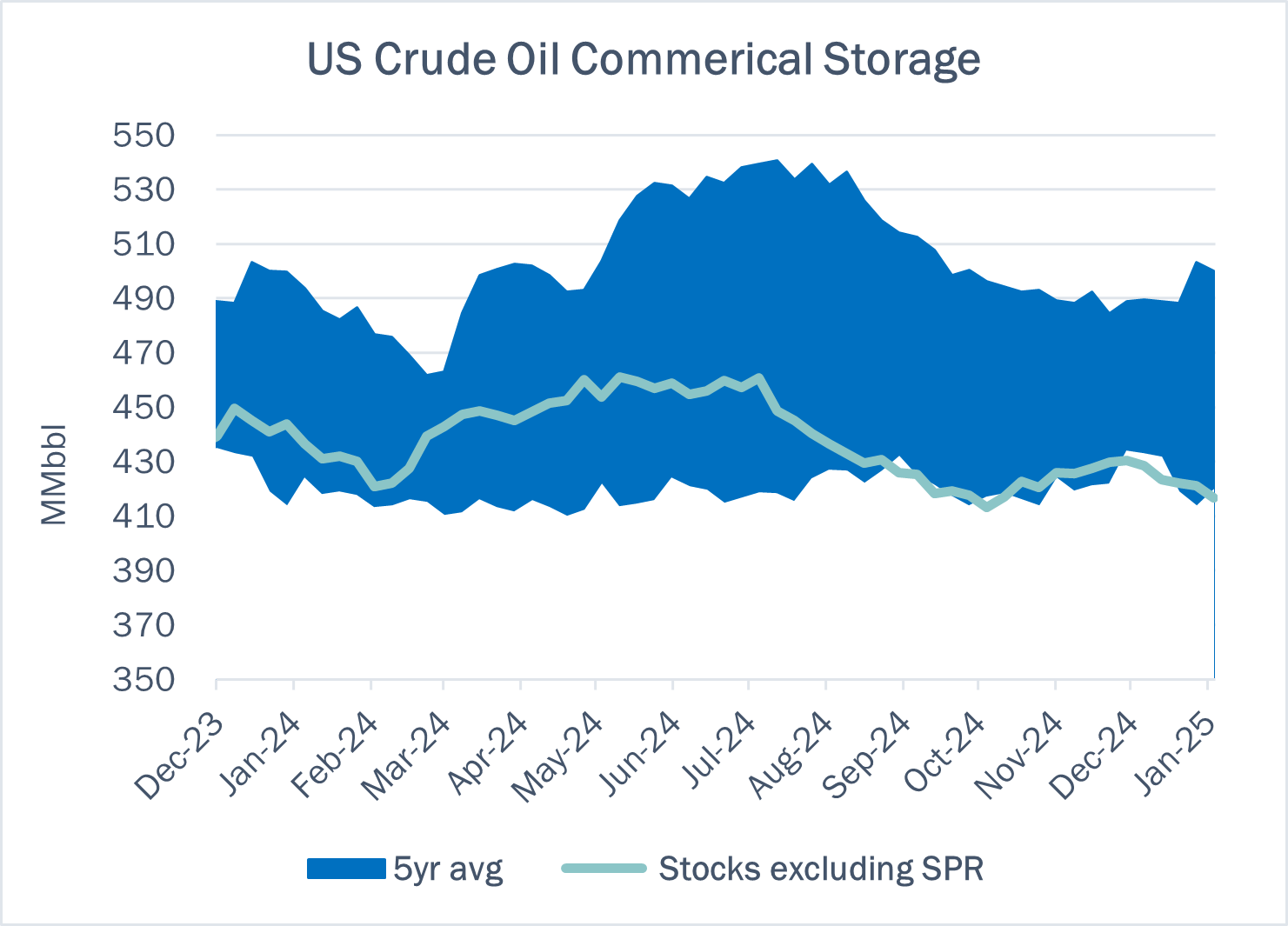
Vessel traffic monitored by EDA along the Gulf Coast increased W-o-W. There were 24 vessels loaded for the week ending January 10 and 16 the prior week. EDA expects US exports to be 3.30 MMb/d.
The SPR awarded contracts for 1.5 MMbbl to be delivered To Choctaw in January and 2.475 to be delivered to Bryan Mount Jan – March 2025. The SPR has 394 MMbbl in storage as of January 10, 2025.
Regulatory and Tariffs:
Presented by ARBO
Tariffs:
Western Refining Pipeline LLC Initial rates were established for service from the Medallion Receipt Point, Midland County, TX, to the connection with Andeavor Logistics Rio Pipeline LLC, Midland County, TX with the agreement of at least one non-affiliated shipper. A volume incentive rate was added for Beta Connector. FERC No 2.35.0 IS25-172 (filed December 18, 2024) Effective December 19, 2024.
NuStar Logistics, L.P. Initial base and incentive rates were established for transportation from La Salle County, Burns Ranch Gathering Connection, TX to Corpus Christi North Beach Terminal Nueces County, TX with the agreement of at least one non-affiliated shipper. The movement from Hwy 16, McMullen County, TX to Corpus Christi North Beach Terminal was canceled as it is no longer in service. FERC No 80.23.0 IS25-175 (filed December 19, 2024) Effective December 20, 2024.
SCM Crude, LLC A new priority rate was established from a new receipt point, 1.22 series of tank batteries in Eddy County, NM requiring a COGA for a minimum 15 years and a minimum acreage dedication. FERC No 1.23.0 IS25-173 (filed December 18, 2024) Effective January 1, 2025.
The above information is provided by ARBO’s Oil Pipeline Tariff Monitor. For more information on regulatory proceedings or tariff rates, please contact please contact Corey Brill via email at [email protected] or phone at 202-505-5296. https://www.goarbo.com/


